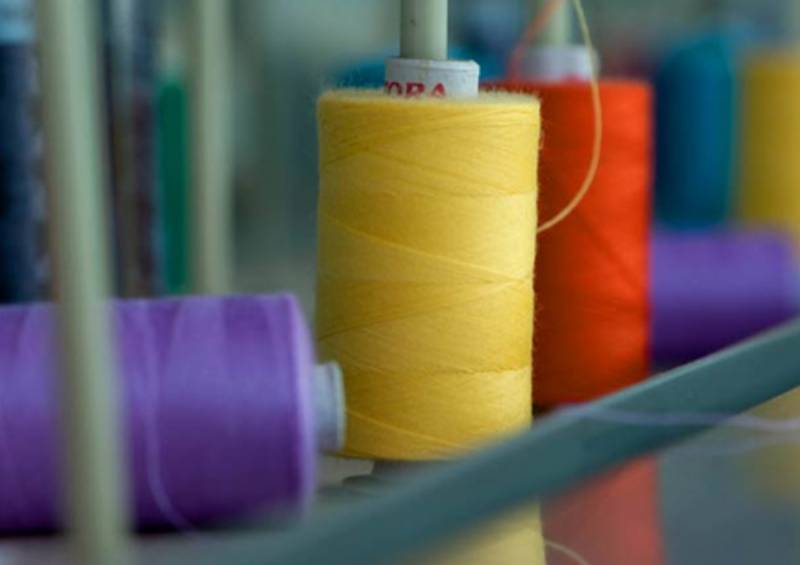FW
Bread & Butter will be held in Germany from August 31 to September 2. This time the trade fair has gained an extra ampersand. The three days will be dedicated to fashion and culture. Some 40 fashion brands will vie to stand out from the crowd with runway shows, exclusive capsules, discussions, customisation workshops, DJ sets and other concerts.
The program features 43 labels – mostly fashion brands but some cosmetics manufacturers are also present – who will be trying their best to grab consumers' attention, presenting limited-edition products and capsule collections that are either exclusives or pre-launches.
Everything on display at the fair will be available for purchase on site through a cashless system created in partnership with Visa, featuring bracelets which shoppers can charge up. A number of brands have already taken to social media to try and attract visitors and potential consumers to their pop-ups.
Among the brands confirmed at the fair are: Adidas Original, Nike, The North Face, Timberland, Puma, Reebok, Columbia, Asics Tiger, Cheap Monday, Converse, Diesel, G-Star Raw, Hugo, Levi's, Obey, Pepe Jeans, Vans and Wrangler. The last edition attracted 30,000 visitors and reached 26.5 million people across Europe through social media.
Spanish apparel retailer, Inditex has supported stronger dialogue and collective bargaining between unions, garment factories and brands for living wages of garment workers. The retailer expects the collective demands of workers, expressed through their legitimate unions including Industriall Bangladesh Council, to be taken into account, and the current negotiations to reach an agreement.
Inditex is also supporting the ACT (Action, Collaboration, Transformation) – an agreement launched in 2014 between global brands and trade unions to improve garment industry wages through collective bargaining, supported by world class manufacturing standards and responsible purchasing practices. Through ACT, Inditex, IndustriAll and other global brands and retailers have earmarked Bangladesh as a priority country to promote collective bargaining as the most effective tool to reach wage agreements between employers, employees and their respective representatives. The retailer, in the next edition of its magazine has included an in-depth update on ACT, an initiative that offers the best chance f securing fairer wages in garment production hubs.
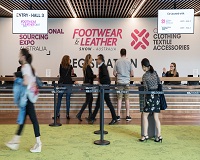 India will have a strong participation at Footwear and Leather Show, Australia, to be held from November 20 to 22. The participation organised by the Council for Leather Exports (CLE), India’s peak export trade promotion organisation for leather industry, will see 30 footwear suppliers and leather goods/accessories and garments exhibit at the show. India is the world’s second largest producer of footwear and leather garments.
India will have a strong participation at Footwear and Leather Show, Australia, to be held from November 20 to 22. The participation organised by the Council for Leather Exports (CLE), India’s peak export trade promotion organisation for leather industry, will see 30 footwear suppliers and leather goods/accessories and garments exhibit at the show. India is the world’s second largest producer of footwear and leather garments.
Australia is a growing and significant market for leather and leather products. For the third year running, CLE is bringing its member companies to Australia to showcase the quality of their products and expand their footprint in the Australian market.
Footwear and Leather Show will feature a comprehensive range of footwear, leather and leather accessories from manufacturers and exporters looking at securing volume OEM & ODM partnerships with a trade and buying audience from across Australia, New Zealand and beyond.
Besides the intense direct business exchange on the show floor, the expo also offers a comprehensive program of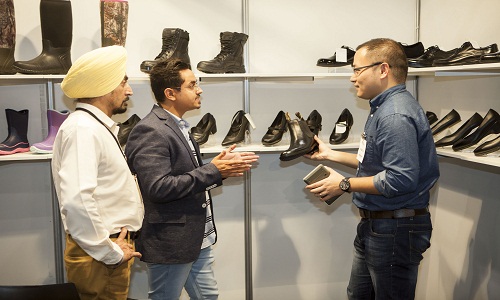 learning and networking opportunities including seminars and workshops, networking events and industry presentations, providing multiple ways of engaging and establishing long-term business relationships.
learning and networking opportunities including seminars and workshops, networking events and industry presentations, providing multiple ways of engaging and establishing long-term business relationships.
India is a reliable and attractive destination for the manufacture of high end goods and CLE’s continuing participation at the Footwear and Leather Show proves this.
India plans to double exports by 2025. In view of the challenges like uncertainty of global trade, rigid approach of banks which affects availability of credit, high logistics cost and productivity standards and qualities, exports can create jobs, bring in foreign exchange and validate India's international competitiveness.
The focus will be on 12 identified sectors for promoting their development, and realizing their potential. A special strategy is being prepared for the services sector to achieve broad-based growth instead of the existing pre-dominance of IT. New structures, policies and action plans will be formulated for the services sector. India will be promoted as a services hub.
Attention will be given to gems and jewelry, leather, textile and apparel, engineering sector, electronics, chemicals and petrochemicals, pharma, agri and allied products and marine products. Apart from traditional markets the country will look at boosting trade with smaller countries and explore new territories like Africa, which has 54 countries but accounts for only eight per cent of exports from India. Needless to say, a massive opportunity is presented by China's consumer market.
India has acceded to the WTO's Trade Facilitation Agreement. An action plan containing specific activities to further ease bottlenecks to trade has been prepared.
Global Fashion Agency and French fashion school Insitute Francais de la Model will sign an MoU during the Economic Forum to strengthen ties and establish more partnership agreements to accelerate sustainability in the fashion industry. The MoU will focus on engaging decision makers from the c-suite, mainly CEOs and creative directors, via leadership roundtables or issuing joint communications on the challenges, advancements, actions taken and policies implemented regarding sustainability.
Global Fashion Agenda is a leadership forum on fashion sustainability, advancing a year-round mission to mobilise the global fashion system to change the way we produce, market and consume fashion. The forum is known for organising the world's leading business event on sustainability in fashion, Copenhagen Fashion Summit, and the yearly industry report Pulse of the Fashion Industry.
Institut Français de la Mode was founded in 1986 with the support of the French Ministry for Industry through several founding members, among them the Fédération de la Haute Couture et de la Mode, to enhance the competitiveness of the French fashion and textiles industry.
Cinte Techtextil will be held in China from September 4 to 6. The fair will showcase world’s leading textile innovations. Cinte Techtextil is the ideal place to make connections and gain insight into Chinese and Asian market trends. This year’s European Zone will feature around 30 exhibitors from countries including Austria, France, the Netherlands, Sweden, Switzerland and the UK, while further exhibitors can be found in national pavilions from Belgium, Germany and Italy. The Czech Republic will present its debut pavilion, showcasing exhibitors with solutions for technical yarn, fabric processing and nonwoven fabrics.
Exhibitors from 12 more countries and regions will present their latest innovations to the market. These include exhibitors from China, Hong Kong, India, Indonesia, Israel, Japan, Korea, Saudi Arabia, Taiwan, Thailand, Turkey and the US.
The fair will showcase exhibitors across 12 application areas. Two areas to watch out for include Buildtech and Mobiltech, which are both performing well in Asia and specifically in China. The Belt and Road initiative brings Buildtech a great deal of benefits through China’s enormous investments in global infrastructure. China has become the world’s largest auto producer, and this has been boosting progress in the Mobiltech category.
The technical textile industry in the Asia region, and China in particular, has been growing steadily.
Ahead of the Minimum Wage Board meeting in Bangladesh, to set the new statutory minimum wage for garment industry workers in the country, Clean Clothes Campaign, the International Labor Rights Forum and Maquila Solidarity Network jointly urged major brands sourcing from Bangladesh to publicly support workers’ demands. These demands include the minimum wage of 16,000 taka, a statutory framework to govern pay grades and promotion and other welfare measures.
Additionally, brands expressed commitment to fully respect and support the outcome of the wage negotiation process. Multistake holder initiatives including Fair Wear Foundation, Dutch Agreement on Sustainable Garments and Textile, and the German Partnership for Sustainable Textiles also urged the Bangladeshi government to take the workers’ and unions’ collective demand into account, and highlighted the overall support for the payment of living wages.
Beside the minimum wage increase to 16,000 taka, workers’ demands include the streamlining of the job grades that determine workers’ pay from seven to five; the introduction of currently inexistent promotion criteria; a 10 percent annual pay increase; and a shortening of apprenticeship periods to the maximum of three months, along with a wage increase for apprentices from 4,180 taka to 10,000 taka.
"To keep up with rising demand, fast fashion companies have started resorting to measures which can enhance quality control standard operating procedures. Big brands have in-house quality control teams, whose job is to design, mandate, and audit processes for vendors to follow throughout production. One of the mandatory processes in garment manufacturing is fabric relaxation. Many fabrics, especially knits, need to be carefully handled to account for stretch that can be warped and affects the overall drape and fit of the final product. But at times, before the fabric pieces are sent through the sewing line, the fabric rolls are mishandled during spreading. Ram Sareen, Head Coach and founder, Tukatech, stated typical ‘relaxation’ necessitates that a factory takes a perfectly rolled fabric, open it onto a table, and leave it there for a day or two to settle. In this process, not only is the integrity of fabric harmed due to the handling and friction, but also one to two days are lost in the production cycle."
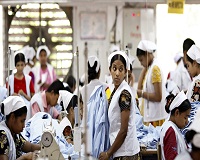 To keep up with rising demand, fast fashion companies have started resorting to measures which can enhance quality control standard operating procedures. Big brands have in-house quality control teams, whose job is to design, mandate, and audit processes for vendors to follow throughout production. One of the mandatory processes in garment manufacturing is fabric relaxation. Many fabrics, especially knits, need to be carefully handled to account for stretch that can be warped and affects the overall drape and fit of the final product. But at times, before the fabric pieces are sent through the sewing line, the fabric rolls are mishandled during spreading. Ram Sareen, Head Coach and founder, Tukatech, stated typical ‘relaxation’ necessitates that a factory takes a perfectly rolled fabric, open it onto a table, and leave it there for a day or two to settle. In this process, not only is the integrity of fabric harmed due to the handling and friction, but also one to two days are lost in the production cycle.
To keep up with rising demand, fast fashion companies have started resorting to measures which can enhance quality control standard operating procedures. Big brands have in-house quality control teams, whose job is to design, mandate, and audit processes for vendors to follow throughout production. One of the mandatory processes in garment manufacturing is fabric relaxation. Many fabrics, especially knits, need to be carefully handled to account for stretch that can be warped and affects the overall drape and fit of the final product. But at times, before the fabric pieces are sent through the sewing line, the fabric rolls are mishandled during spreading. Ram Sareen, Head Coach and founder, Tukatech, stated typical ‘relaxation’ necessitates that a factory takes a perfectly rolled fabric, open it onto a table, and leave it there for a day or two to settle. In this process, not only is the integrity of fabric harmed due to the handling and friction, but also one to two days are lost in the production cycle.
It is often seen that about 8-10 workers handle fabric spreading, which increases manual dependency. When it is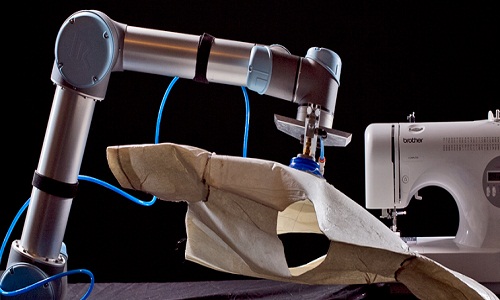 time for production spreading, that fabric is usually handled by at least eight, and sometimes by as many as fourteen or fifteen people, who catch and pull the fabric out of proportion as they lay it down. This creates uneven stretch about the fabric, and completely negates any relaxation that might have happened while the fabric was lying in a pile the day before. Factories are following the procedures as they are given, but sometimes these practices diminish the very quality they are seeking.
time for production spreading, that fabric is usually handled by at least eight, and sometimes by as many as fourteen or fifteen people, who catch and pull the fabric out of proportion as they lay it down. This creates uneven stretch about the fabric, and completely negates any relaxation that might have happened while the fabric was lying in a pile the day before. Factories are following the procedures as they are given, but sometimes these practices diminish the very quality they are seeking.
The same practices are often applied uniformly across all types of fabric, even if the necessity is not there. For example, fabric handling procedures for knit fabrics may be applied to denim, simply because it is a ‘stretch’ denim. Sareen highlighted that the stretch for denim is only in the width. You can relax the denim for ten years and it is never going to come back in length. These procedures become ingrained in local production culture, and changing these fixed processes becomes very difficult.
Fabric handling
Labour in the some countries is cheap, but labour accounts for less than 20 per cent of the total production cost. The cost of fabric, on the other hand, equates to 60-75 per cent of the garment cost. It is in the best interest of both brands and vendors to focus on handling fabric carefully, so that the human and material resources are not wasted, and the number of steps and time for manufacturing are reduced. Simplifying the fabric spreading process means reduction in the cost of labour, better product quality, and a shorter lead time. When fabric spreading is done automatically with a machine or on a mechanised trolley system the capacity increases.
Automatic fabric spreading ensures that every inch of fabric is aligned and gently handled from the time the roll is opened, until the pieces are cut and ready for sewing. Automatic fabric spreading machines come with tension-free mechanisms to unwind material from the roll, and constantly monitor the tension during spreading to keep consistent tension throughout the fabric. This means that relaxation for most types of fabric can be reduced or even eliminated from the production process, which saves one or two days, plus the required labour cost, and potential for lost fabric integrity.
Automation saves time
In addition to automatic fabric spreading, CAD systems help automate fabric planning and utilisation, as well as other pre-production practices. Accounting for fabric shrinkage, for instance, automatically adjusts the piece geometry, even for very tricky fabrics. Cut-planning applications then run order scenarios to ensure the best lay plans, and nesting algorithms calculate the best utilisation of the width of the fabric actually received. Such practices could save three to five days, 20 per cent of staff, and 3-12 per cent of fabric, as well as result in better quality garments.
Nike is a favorite brand among Gen-Z, aged 13 to 20, in the US. Teens are moving away from traditional youth brands such as Abercrombie & Fitch. In the apparel sector, youth brands such as Hollister and Aeropostale have also lost ground with Gen-Z consumers in the last five years.
Reduced interest in these heavily mall-reliant retailers could well reflect a wider trend, as young consumers move away from destination retail, increasingly preferring convenience store-style spaces. Athletic shoe brands such as Reebok, Converse, Vans and Puma have also lost out among Gen Z over the last five years.
Gen Z is highly social, online and offline, with greater conversational engagement than adults in most consumer categories. Discussions about brands are behind on an average 19 per cent of consumer purchases, accounting for somewhere between seven and ten trillion dollars in annual sales.
Nike is the most talked about apparel and footwear brand, discussed by 11.2 per cent of teens, up 34 per cent since 2013. There is also a decline in discussions concerning retailers such as Nordstrom, JCPenney, Kohl’s, Macy’s, Kmart, Sears, and TJ Maxx. However, important as trends may be, there are plenty of brands that are succeeding despite them.
In the first four months of the current year, knitwear exports from Tirupur have fallen 13 per cent. One reason is GST and the consequent reduction in duty drawback and rebate of state levies. Tirupur garment exporters have greeted the increase in basic customs duty from 10 to 20 per cent on specified garments.
The duty hike on import of 23 knitted garment items and one knitted fabric is expected to help protect the domestic textile industry. Knitwear exporters had been appealing for swift action in this regard as textile imports from countries such as China, Bangladesh, Vietnam and Cambodia have increased significantly.
Exporters say there is a need to restrict import of textile products. They have prepared a white paper detailing the threat from China, with Chinese companies setting up factories in countries bordering India to take advantage of labor, low wages and customs exemption available to these countries in EU and Canada. Under the South Asian Free Trade Area agreement, specified garment items imported into India from Bangladesh are also exempted.
The Tirupur knitwear cluster is looking forward to the Indo-Pacific economic corridor as it would open up traditional apparel markets abroad. The corridor is a treaty of 12 countries, including India, the US, Australia, Indonesia, Japan and New Zealand among others.






